Articles of 2005
Jack Dougherty: Boxing, Clog Dancing, Potter’s Field
Eighty-eight years ago this week, the Milwaukee Sentinel sent Jack Dougherty to his grave.
The Wisconsin newspaper didn’t cause the demise of Dougherty, but rather insured that he had a final resting place befitting his status as “one of the greatest boxers who ever stepped into a roped arena,” instead of ending up anonymously in the local Potter’s Field.
Dougherty was born on January 6, 1882, in Nottingham, England. He came to the Milwaukee area with his family as a boy, and when Dougherty began his professional prize-fighting career in 1901, his timing was as exquisite as his flashing fists and footwork.
Professional boxing was officially illegal in Wisconsin since before the Civil War, and bouts were usually held in secrecy. If word got out beforehand, the governor would order local authorities to intervene.
In 1901, when bouts billed as “exhibitions” to get around the proscription against prize-fighting were held at the Panorama in downtown Milwaukee, Gov. Robert A. LaFollette notified Mayor David A. Rose that he would dispatch the militia to Milwaukee if Rose didn¹t move to halt them.
But Rose was as big a boxing fan as he was a believer in local autonomy.
“You had better send enough militiamen and deputies to fight the entire police force of Milwaukee,” he telegrammed back. “I am running this town and I am going to permit boxing.”
He did, and when Jack Dougherty started knocking guys out, many of them probably wished Gov. LaFollette had done his duty to prevent it.
One of his victims, Maurice Sayers, another outstanding Milwaukee boxer in the early 20th century, referred to a local catastrophe to describe what it was like to be whacked by Dougherty: “I thought I was in the Third Ward fire and all the big buildings were falling down on me.”
When Dougherty beat Jack Robinson on November 11, 1904, it was reported that by the fifth round “nearly every man in the Panorama was on foot, and the combined showing of exultation threatened the safety of the building. Such rushing, infighting and maneuvering has seldom been seen in Milwaukee.”
But not everything the Milwaukee boxer did won him accolades. After Dougherty knocked out Dick Hart in two rounds on November 3, 1905, The Milwaukee Journal reported that he “is in the habit of making a fool of himself after a victory. Jack’s act of dancing after he had knocked out Hart did not add anything to his victory. It only helped to disgust a true sportsman.”
The Police Gazette, that era’s “SportsCenter,” called Dougherty “a past master at long range fighting, a scientific, crafty boxer with a sleep producing punch and a pair of wonderfully fast feet.”
The Milwaukee man got his big chance on July 10, 1906, only it happened to be against one of the greatest boxers in ring history. Dougherty was doing well against Joe Wolcott, called “The Barbados Demon,” in their championship fight in Chelsea, Massachusetts, until Wolcott knocked him down with a left hook in the eighth round.
“I thought I had him beaten until the last round, but he socked me on the (left) eye and I was struck stone blind,’ Dougherty later recalled. “I wasn’t knocked out, but I thought my eye was, and I got up on my hands and knees and was feeling around the floor for it when the referee counted me out.
“It isn’t so bad to be knocked out, but when you lose an eye it makes you feel pretty rotten.”
Dougherty remained a hero of local rings for several years. He opened a boxing school downtown, and after Mayor Rose left office and boxing was once more driven underground, he had a couple foot races of note.
He also gilded his celebrity by giving clog-dancing exhibitions. That kind of dancing the newspapers liked. “Mr. Dougherty is recognized as one of America’s foremost wooden shoe clog dancers and he promises a demonstration that will astonish the natives,” reported one before he appeared at the Pabst Theater.
In 1909, When Boston Store expanded the sporting goods department in its downtown Milwaukee emporium, having Dougherty on hand at the grand opening insured big crowds. He “is a living example,” gushed one newspaper story, “of what scientific physical culture will do to make a perfect man.”
But his perfection was undermined by the onset of tuberculosis in 1916, and on September 20, 1917, the run-down Dougherty died after an emergency appendectomy at Trinity Memorial Hospital. He was just 35 years old.
For all his achievements and fame, the former contender died penniless. “He never was able to save much, although he did not squander what he had,” reported the Sentinel. So the newspaper launched an unprecedented solicitation of funds to keep the onetime idol of Milwaukee from a pauper’s grave.
One of the first contributions came from Sherburn M. Becker, a former mayor, who remembered Dougherty as “a good, square fellow in the ring.”
The Sentinel printed a running tally of contributions, and within a week there was enough in the kitty to purchase a burial plot and headstone at Forest Home Cemetery, final resting place for Milwaukee’s most prominent citizens, and where, reported the newspaper that sent Jack Dougherty to his grave, “the remains of one of the greatest welters were laid to rest.”
-
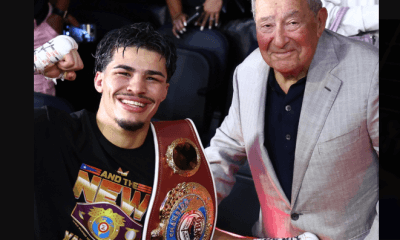
 Featured Articles3 weeks ago
Featured Articles3 weeks agoThe Hauser Report: Zayas-Garcia, Pacquiao, Usyk, and the NYSAC
-
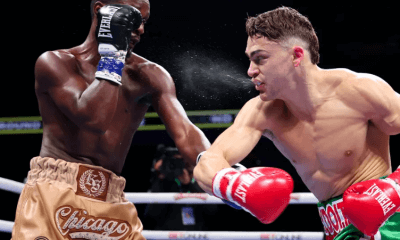
 Featured Articles2 weeks ago
Featured Articles2 weeks agoOscar Duarte and Regis Prograis Prevail on an Action-Packed Fight Card in Chicago
-
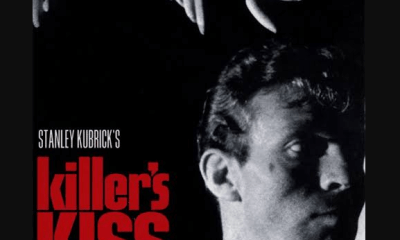
 Featured Articles2 weeks ago
Featured Articles2 weeks agoThe Hauser Report: Cinematic and Literary Notes
-
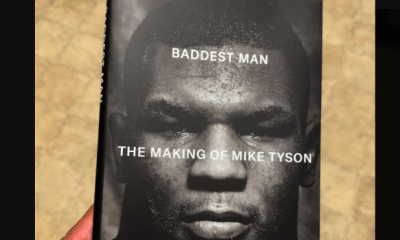
 Book Review1 week ago
Book Review1 week agoMark Kriegel’s New Book About Mike Tyson is a Must-Read
-

 Featured Articles4 weeks ago
Featured Articles4 weeks agoArne’s Almanac: Pacquiao-Barrios Redux
-

 Featured Articles3 weeks ago
Featured Articles3 weeks agoRemembering Dwight Muhammad Qawi (1953-2025) and his Triumphant Return to Prison
-
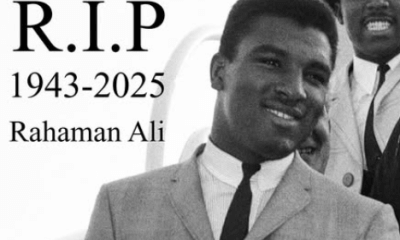
 Featured Articles2 weeks ago
Featured Articles2 weeks agoRahaman Ali (1943-2025)
-
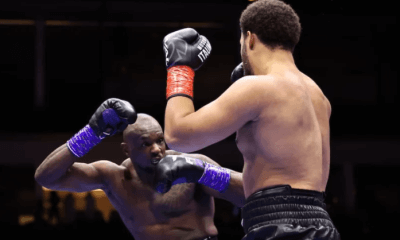
 Featured Articles3 days ago
Featured Articles3 days agoMoses Itauma Continues his Rapid Rise; Steamrolls Dillian Whyte in Riyadh













